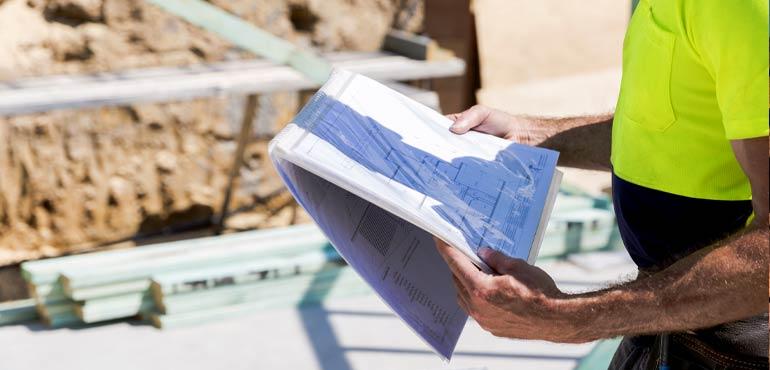
- Home
- Worksite & building practice
- On-site responsibilities
- Supervision and quality control
Supervision and quality control
Proper supervision of building work is essential to ensure standards are upheld and that contractual arrangements are met. Lack of adequate supervision can cause major problems for both contractors and clients and additional costs to fix defective or substandard work can be high.
In extreme cases, fixing poor quality work has forced licensed contractors to close their businesses or declare bankruptcy. The best way to ensure quality of work is to have proper supervision practices in place.
Both individuals and companies that contract for work, as well as construction managers, have legal responsibilities to ensure personal and adequate supervision. In addition to the risks to work quality, not having appropriate personal and adequate supervision can actually be an offence resulting in fines, court appearances and/or disciplinary actions which may impact your licence.
Personal supervision
For a licensed contractor who is an individual, the contractor must ensure that building work is supervised by:
- the contractor; or
- an employee of the contractor who holds one of the following licences of the relevant class authorising supervision of the building work—
- a nominee supervisor’s licence
- a site supervisor’s licence
- a fire protection occupational licence
- an occupational licence, or
- an individual who holds a contractor’s licence of the relevant class.
For a licensed contractor that is a company, both the company and the company’s nominee must each ensure that building work carried out by the contractor is personally supervised by:
- the company’s nominee; or
- an officer or employee of the contractor who holds one of the following licences of the relevant class authorising supervision of the building work—
- a nominee supervisor’s licence;
- a site supervisor’s licence;
- a fire protection occupational licence;
- an occupational licence; or
- an individual who holds a contractor’s licence of the relevant class.
This does not mean one of those people must be on site at all times every day, however the personal supervision must be adequate.
Adequate supervision for the work being undertaken
The following considerations are used to determine whether building work is adequately supervised:
- whether the licensed contractor has a system for the supervision of the work and, if so, how the system has been implemented
- whether the building work is in accordance with the plans and specifications set out in the contract for the work
- whether the work is of a standard expected of a competent holder of a contractor’s licence of the relevant class
- whether, having regard to the size and complexity of the building work, the following are sufficient—
- the level of control, oversight and direction exercised by a person authorised to supervise the work
- the number, timing and quality of inspections carried out by a person authorised to supervise the work
- whether the building work is checked on its completion and before final payment by a person authorised to supervise the work.
It is strongly recommended that contractors develop supervision plans for each project and be able to demonstrate how those plans were implemented to ensure an appropriately licensed individual provided personal supervision and that their activities resulted in the supervision being adequate.
Supervising complex and large build projects
These types of projects generally require a number of appropriately licensed individuals to be based on-site on a full-time basis. They should actively supervise all stages of the build process and report any issues to the company, nominee or the construction manager.
Certifiers and supervision
A certifier is not responsible for the supervision of work. Licensed building certifiers assess building applications, decide whether to issue building approvals, and inspect and certify building works. The certifier ensures the building works comply with the building assessment provisions, the Building Act and the approval. Certifiers can work for local government or in private practice.
Read about the role and responsibilities of a certifier.
Quality control
Besides the need for supervision, it is in your best interest to be diligent about quality control. This means making sure that the work meets Australian Standards and contractual obligations. It will help to minimise customer complaints and disputes which can be time consuming and costly.
In addition to the required personal and adequate supervision of work, at a minimum, detailed inspections at these stages is recommended:
- when structural stages of construction are completed (footing, slab, frame and final)
- before the start of significant non-structural stages of construction (e.g. at pre- paint, before fixing stage, or before plasterboard or cladding is fixed)
- before handover to the consumer
- at other times as needed.
A property owner can use a private building consultant to monitor their project if they would like a more technical person to inspect the work and raise any issues on their behalf.
Accountability of subcontractors
Head contractors and subcontractors are both accountable for any defective building work performed.
Where there is defective work, the QBCC can legally direct for the work to be rectified. Failing to do so can be an offence resulting in fines and possibly a court appearance or disciplinary action which could result in suspension or cancellation of their licence.
Supervisor's checklist for domestic building work
-
- Mandatory approvals obtained (e.g. development permits for building work, operational works, plumbing, town planning, etc)
-
- Site description and boundary alignments verified
-
- Correct level of building platform established
- Earth batters or retaining walls established
- Required fill compaction achieved
-
- Set back from titled boundaries accord with approval documents
- Building footprint reflects approval and contract documents
-
- Mandatory inspections undertaken and approved by relevant approving authority
- Relevant plumbing and drainage inspections undertaken and approved by relevant authority
- Excavation, steel reinforcement, concrete placement and compaction accords with approval and engineering documents
-
- Mandatory inspection undertaken and approved by relevant approving authority
- Plumbing and drainage inspections undertaken and approved by relevant approving authority
- Steel reinforcement, concrete placement and compaction, construction and control joints accord with approval and engineering documents
- Finished slab level accords with any minimum levels set by local government (e.g. flood, overland flow)
- Termite management system in place
-
- Mandatory inspection undertaken and approved by approving authority
- Frame set out and dimensions accord with approval documents
- All structural elements and wind bracing accord with approval documents
- Ceiling heights and door widths accord with the contract documents and minimum standards set by legislation
- Wall and ceiling framing is plumb and square
-
- Plumbing rough-in inspection undertaken and approved by approving authority
- Position of final fixtures accord with contract documents
-
- Electrical supply authority requirements satisfied
- Smoke detector locations accord with approval documents
- Position of final electrical fittings accord with contract documents
-
- External window and door fitments meet correct wind loading requirements
- External window and door flashings in place
- Correct glass used in areas of human impact risk
- Installation and glazing certificates obtained
-
- Articulation, construction and control joints correctly positioned
- Wall cavities cleaned
- Weepholes clear and correctly positioned
- Damp proof courses in place
- External cladding waterproofed where required
- Brick cladding plumb
-
- Roof fixings in place and correct for wind category
- Sarking correctly lapped and placed
- Flashings in place and of compatible materials
- Minimum falls and laps to sheet roofs correct
- Roof drainage and downpipes located in accordance with approval documents
-
- Downpipe connections adequate for soil conditions
- Roof water discharge to approval authority’s satisfaction
- Site drainage falls adequate
- Site drainage discharge to approving authority’s satisfaction
-
- Frame checked prior to plaster fixing
- Required back blocking in place
- Expansion and control joints correctly located
- Selected class of finish achieved in accordance with contract documents
-
- Pre-paint inspection carried out to ensure adequate surface
- Correct paint type used for internal and external environment
- Selected finish accords with contract documents
-
- Mandatory inspection undertaken and approved by relevant approving authority
- Relevant certification obtained and provided to relevant approving authority
-
- Driveways constructed with appropriate falls, control and construction joints and surface finishes
Related resources

